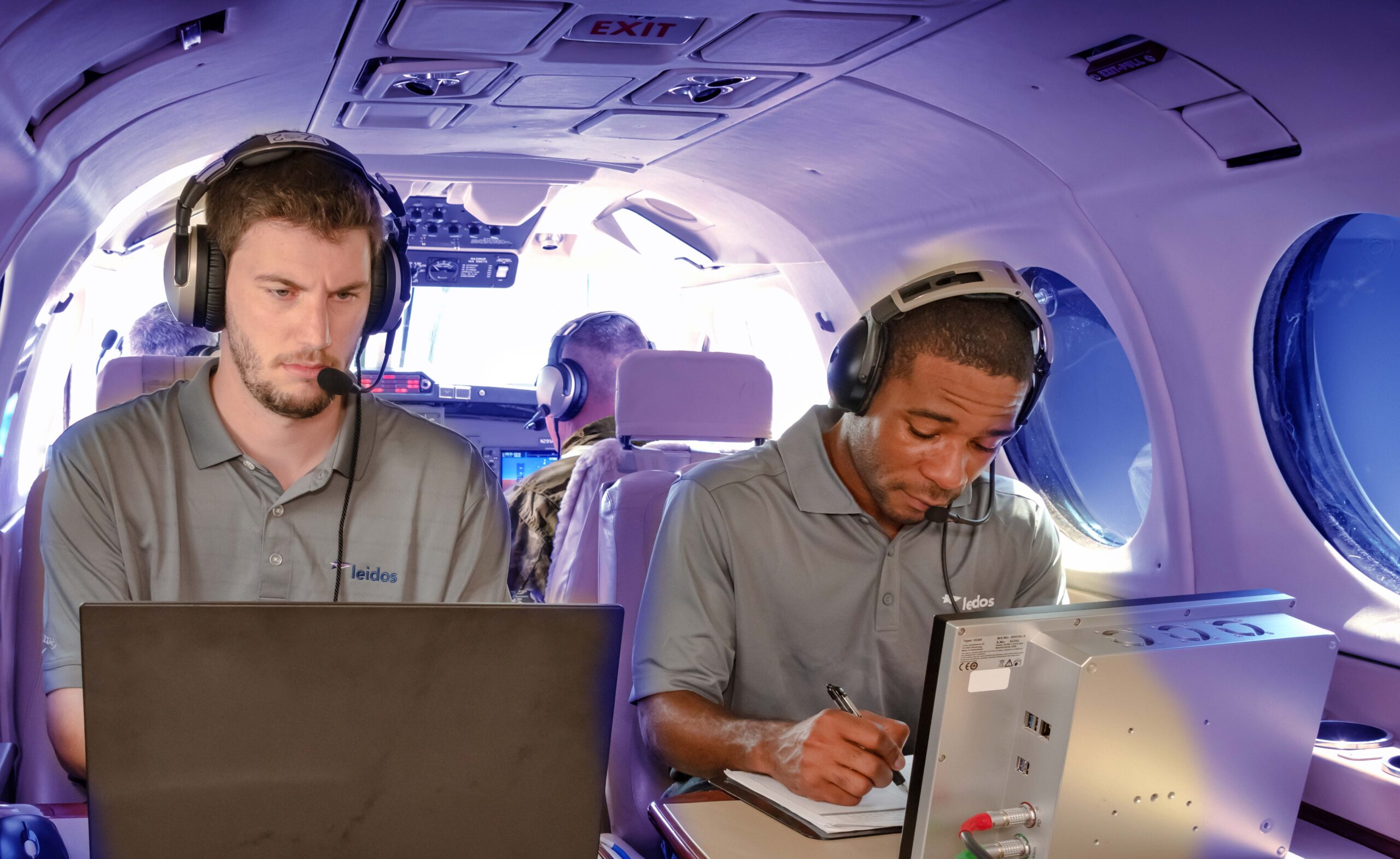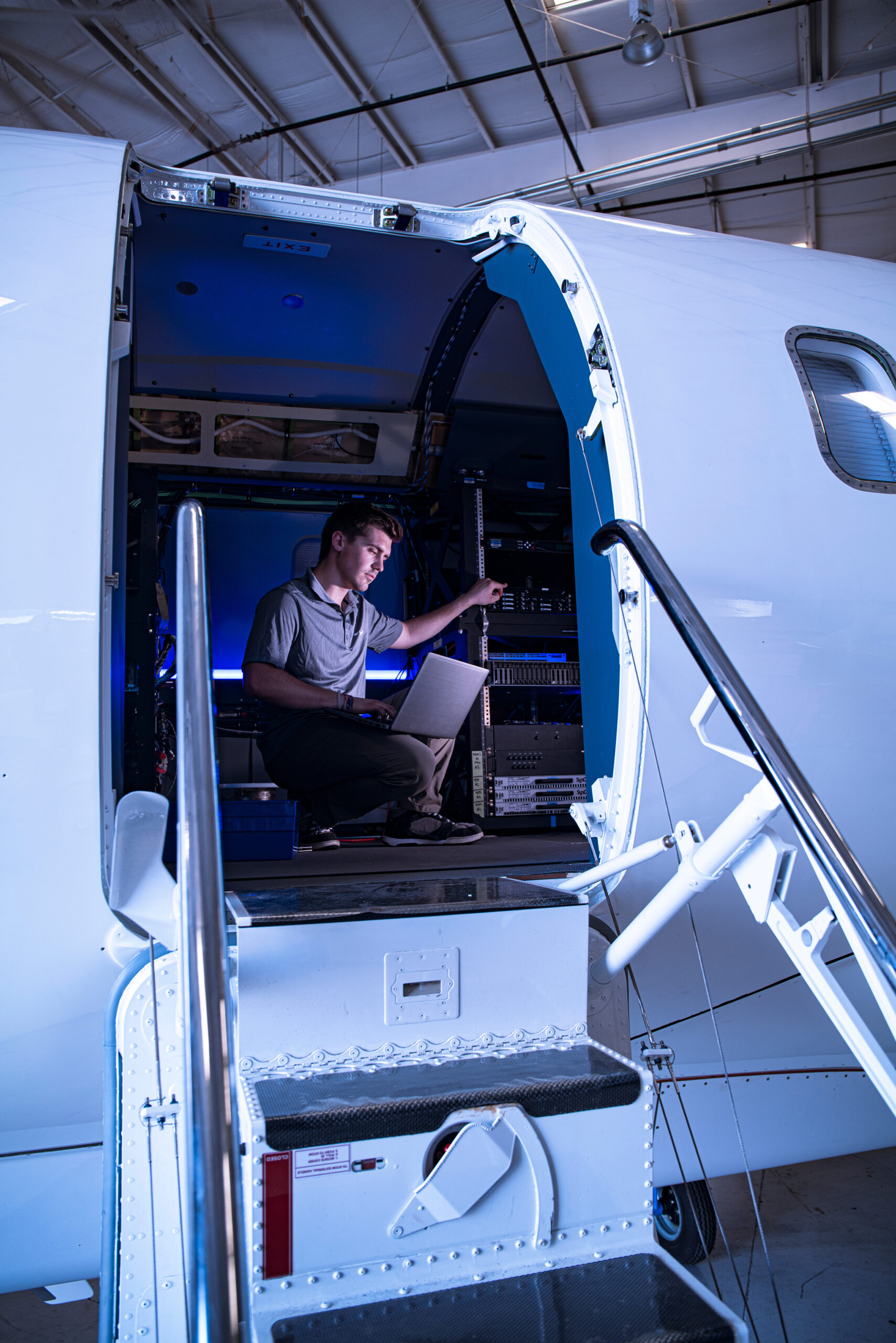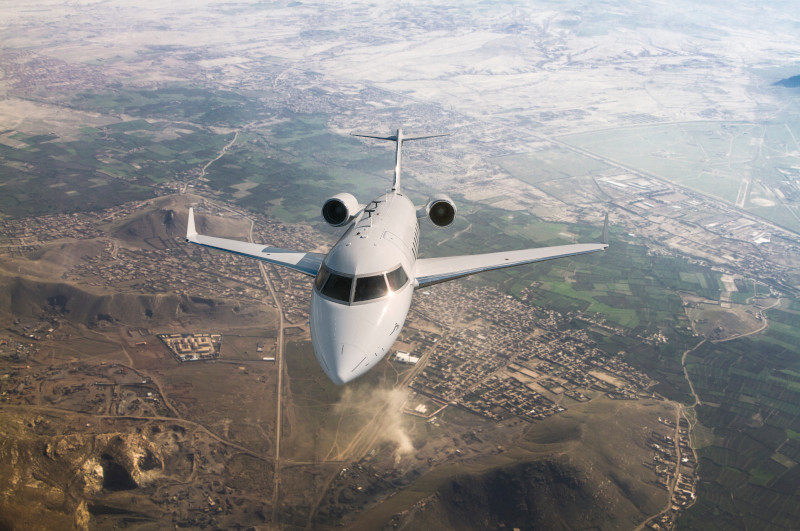
With an eye toward ISR-as-a-Service, Leidos makes the new Army ISR platform available through a Contractor Owned, Contractor Operated (COCO) program. Photo courtesy of Leidos.
The Army needs greater standoff distance in its intelligence, surveillance, reconnaissance (ISR) platforms in order to stay out of range of more sophisticated capabilities being developed by near-peer adversaries. That demands sensors with greater range, more varied types of sensors for detection, and the ability to quickly swap them out as threats evolve. They also need greater speed and range from the ISR platforms themselves as conflict zones shift rapidly on a global scale.
According to Secretary of the Army Christine Wormuth, the 2030 Army will need to “see more, farther, and more persistently at every echelon than our adversaries.”
Hitting home that point, the Army’s ISR aircraft fleet “has been tailored for the war on terrorism,” observed David Radcliffe, Leidos vice president and division manager. “We need to start looking ahead to how we deal with the peer-on-peer threat from Russia and China.”

Leidos and the ARTEMIS team have been able to add new systems and capabilities in the field with minimal downtime in response to intelligence demands. Photo courtesy of Leidos.
Leidos responds to an urgent Army ISR need
The Army got the ball rolling in late 2019, when it issued an urgent needs requirement for a new ISR capability — one that could cover longer distances, and could support multiple current and future sensor arrays.
The Leidos team stepped in with a revolutionary business approach, undertaking to build a demonstrator with no contract in place in order to meet the Army’s need, despite the obvious business risk to the company. Working in collaboration with PEO Aviation and the G2 ISR Task Force, it delivered a deployed capability in just 18 months. In that time, Leidos purchased a super-midsize business jet, and then proceeded at its own expense to modify that aircraft and equip it with state-of-the-art capabilities in order to build this technology demonstrator.
The result of that effort was the Leidos Special Mission Aircraft (LSMA), deployed by the Army as ARTEMIS, the Aerial Reconnaissance and Targeting Exploitation Multi-Mission Intelligence System.
Built on a commercial airframe, the ARTEMIS solution aims to deliver advanced ISR capabilities on a platform that can travel far and fast. Leidos has paired this offering with a novel business model known as “ISR as a Service” that shifts the burden for operation and maintenance onto itself while lowering total cost of ownership for the Army.
The development effort began with the purchase of a Bombardier Challenger 650 business jet, whose technical specs supported the near-peer need: an aircraft with a range of 4,000 nautical miles and 10 hours of loiter time that is capable of operating at an altitude of 40,000 feet. The signal intelligence sensor array installed by Leidos on the aircraft included electronic intelligence and communications intelligence capabilities.
To enable the Army to leverage that robust suite of ISR sensors, and to swap them out easily as new requirements or capabilities emerge, Leidos turned to an “open standards architecture and approach,” said Will Mahoney, chief technology officer for Airborne Solutions Operations at Leidos. In Leidos’s unique solution, electronic intelligence equipment components are swappable at the box and card level. This means a single aircraft can serve in multiple mission capacities, which in turn translates to lower costs in training, logistics, and maintenance.
The value of this approach became evident when the platform participated in the Experimental Demonstration Gateway Exercise 21 (EDGE), a demonstration of new and emerging technologies, as well as in the Army’s groundbreaking Project Convergence.
“At EDGE 21, ARTEMIS successfully flew six scenario-based targeting and collection flights,” the Army reported. “During one flight, ARTEMIS identified targets and transmitted real-time data from the aircraft to the intelligence processing, exploitation and dissemination center in Fort Gordon, Ga. The data was then used to task other assets to attack and destroy the targets.”
The Army initially deployed ARTEMIS to the Indo-Pacific Command. “We ran there for several months,” Radcliffe said. “We then redeployed to the European theater, where we have been up and operational ever since.”
Operational advantages
Using a faster aircraft for ISR has certain practical advantages: it allows the Army to stage these assets further back from the field (and thus more safely), and to execute the ISR mission with fewer aircraft since a faster aircraft can be repositioned rapidly across long distances, thus alleviating the need for multiple aircraft in disparate locations.
Beyond these inherent characteristics, the platform has demonstrated a number of significant operational capabilities, delivering “new tactics and techniques” in support of Army’s emerging battlefield vision, said Radcliffe.
These include: rapid repositioning and Agile Combat Employment (ACE) that are supported by the aircraft’s speed, operational teams, and logistics model; and higher standoff ranges due to higher altitude and more capable sensors.
Repositioning of a turboprop ISR asset from INDOPACOM to Europe can take five to seven days, for example. The current adversarial environment demands something faster to address the sophisticated technology used by near-peer adversaries and also in response to the speed at which an unanticipated threat can emerge in a theater.
ARTEMIS’ ACE from the Pacific theater to Europe was “the first time that an Army asset ever moved from one major theater to a second major theater in less than 24 hours and resumed operations,” Radcliffe said. “This was really a game-changing capability for the Army.”
The open-standards approach — which the Army mandates as part of its Modular Open System Approach (MOSA) — makes it possible to interface with a range of sensor capabilities, and to make rapid changes to the ISR capabilities as threats evolve and as the ISR mission changes from one area of responsibility (AOR) to another. For example, the ARTEMIS team has been able to add new systems and capabilities in the field with minimal downtime in response to Intelligence demands.
“We have actually gone through three upgrades to the aircraft since we deployed operationally,” Radcliffe said. Two were done in the field and one in CONUS during a maintenance cycle. “That open architecture proved itself to enable major upgrades to the systems in days instead of weeks.”
The Army has taken note of that capability. When changes are needed, “we iterate on software, sensors, and hardware, and back out it goes,” said Ronald Rizzo, deputy project director for sensors aerial intelligence at Program Executive Office Intelligence, Electronic Warfare and Sensors.
Onboard processing meanwhile speeds the production of battlefield intelligence. “We are doing edge processing on the aircraft,” Mahoney said. The processed data is directly accessible by analysts at Fort Gordon for “unique intelligence product analysis and product generation. By doing all the data processing directly onboard the aircraft, we shorten that cycle.”
In the European theater, the platform has delivered more than 2,500 hours of operational ISR time. “Since its inception, ARTEMIS has had a 92 percent mission capable rate,” he said.

The Leidos Special Mission Aircraft (LSMA) is deployed by the Army as ARTEMIS, the Aerial Reconnaissance and Targeting Exploitation Multi-Mission Intelligence System. Photo courtesy of Leidos.
The COCO model for Army ISR
Leidos is offering LSMA through a novel business model intended to ease the logistics and financial burden on the Army. The private sector has lately championed the “as a service” model, with cost-efficient and easily-upgradable Software-as-a-Service and Infrastructure-as-a-Service being two examples.
With an eye toward ISR-as-a-Service, Leidos makes the new platform available through a Contractor Owned, Contractor Operated (COCO) program. As the name suggests, Leidos assumes responsibility for operating and maintaining the aircraft, providing skilled personnel and keeping an inventory of spare parts readily available in the field.
Among other things, the COCO model incentivizes Leidos to seek out innovative means of delivering the capability more effectively, while also keeping down cost. Already under the COCO model: “we’ve been able to use a much more nimble and agile deployment” in support of logistics needs, Mahoney said.
Leidos can leverage the already-existing infrastructure to support the Bombardier aircraft, including depots in Germany, Singapore, and elsewhere around the world. “Instead of standing up whole new logistics supply chains and new supply centers, we can pivot from one area to the other while maintaining high-availability aircraft, and getting parts moving that are necessary to keep an airframe flying,” Radcliffe said.
The model likewise eases the operational burden and personnel requirements for the Army.
“Their normal thinking would be to have three aircraft,” with one operational and two in rotation, Radcliffe noted. “Here we are operating one aircraft with high availability — and we bring the people to the mission.”
Those onboard personnel include the sensor operators, who work in close collaboration with Army analysts on the ground. Overall, the as-a-service approach creates an on-demand personnel capability, freeing the Army from keeping a set number of pilots, mechanics, and sensor operators on hand.
When op-tempo is slow, “we take on that responsibility of keeping those people trained and able to deploy, while our footprint is minimized to exactly what we need to do to perform the mission,” Radcliffe said. When more operational capacity is needed to keep pace with the operational tempo, “we can scale it up very rapidly, going from 200 hours a month to 300 hours a month of ISR flight time almost instantaneously.”
Radcliffe said a second ARTEMIS aircraft will go operational in January 2023. Leidos’ aim is to eventually supply the Army with multiple LSMA aircraft.





















